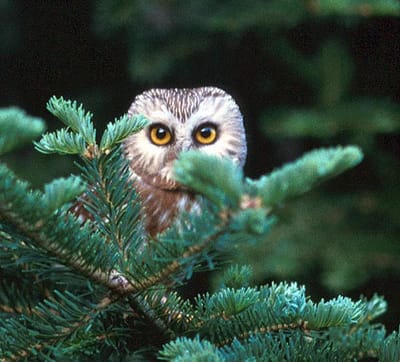Case Study 2
Capercaillie Tetrao urogallus as an Umbrella Species
In the Finnish Taiga, many species of fauna are suffering due to habitat loss.
The Capercaillie Tetrao urogallus, also known as just capercaillie or wood grouse, is also under threat, with their population size having decreased greatly since the middle of the last century, up to 80% in southwesterly parts of the country.
The capercaillie is a mythical bird, involved in many Finnish fairytales, making it a desirable game animal. It is also vulnerable due to its dependence on traditional courting sites, where males will arrive first and perform long and complex songs to attract females over whom they will then fight. These sites are called leks, after the Swedish word for play. If leks are disturbed, capercaillie won't mate.
In their article "Capercaillie Tetrao urogallus - A good candidate for an umbrella species in taiga forests", published in Wildlife Biology December 2003, Finnish biologists Timo Pakkala, Jani Pellikka and Harto Linden discuss their findings in an experiment designed to test for links between capercaillie leks and biodiversity.
In a study area of 465km^2 of taiga in southern Finland, a total of 41 lek sites were mapped between 1987-2002. The centre of a lek was defined by the location of the male during courting, and annual data was combined to create a centre for each lek for the study period. Throughout the study period, the number of breeding forest bird species within a 300m and 1000m radius from the centre was registered. Control sites were situated 2km southwest of each lek site, and had to be at least 1km from any other lek site.
Within a 300m radius the mean number of breeding forest bird species at lek sites was 41.2, and 36.4 at control sites. At a 1000m radius the difference was less significant but still noteworthy: mean 59.6 species at lek sites, mean 58.1 at control sites. The overall species richness of forest birds was greater in the vicinity of leks.
The tolerance range for capercaillie's leks is one in which a great species richness is possible. Large and continuous areas of forests are needed. If one were to visualize a capercaillie's tolerance curve for certain limiting environmental conditions, plotting population size on the y axis and an environmental factor on the x axis, its optimum range should be very wide in comparison to other forest species whose bell curves would fall within it as though under an umbrella (although their tolerance curves may be taller, as the capercaillie are scarce).
In protecting and managing these lek areas, foresters are thus able to make a more effective contribution to conservation than they would be if choosing areas at random. This is why capercaillie can be described as an umbrella species.

